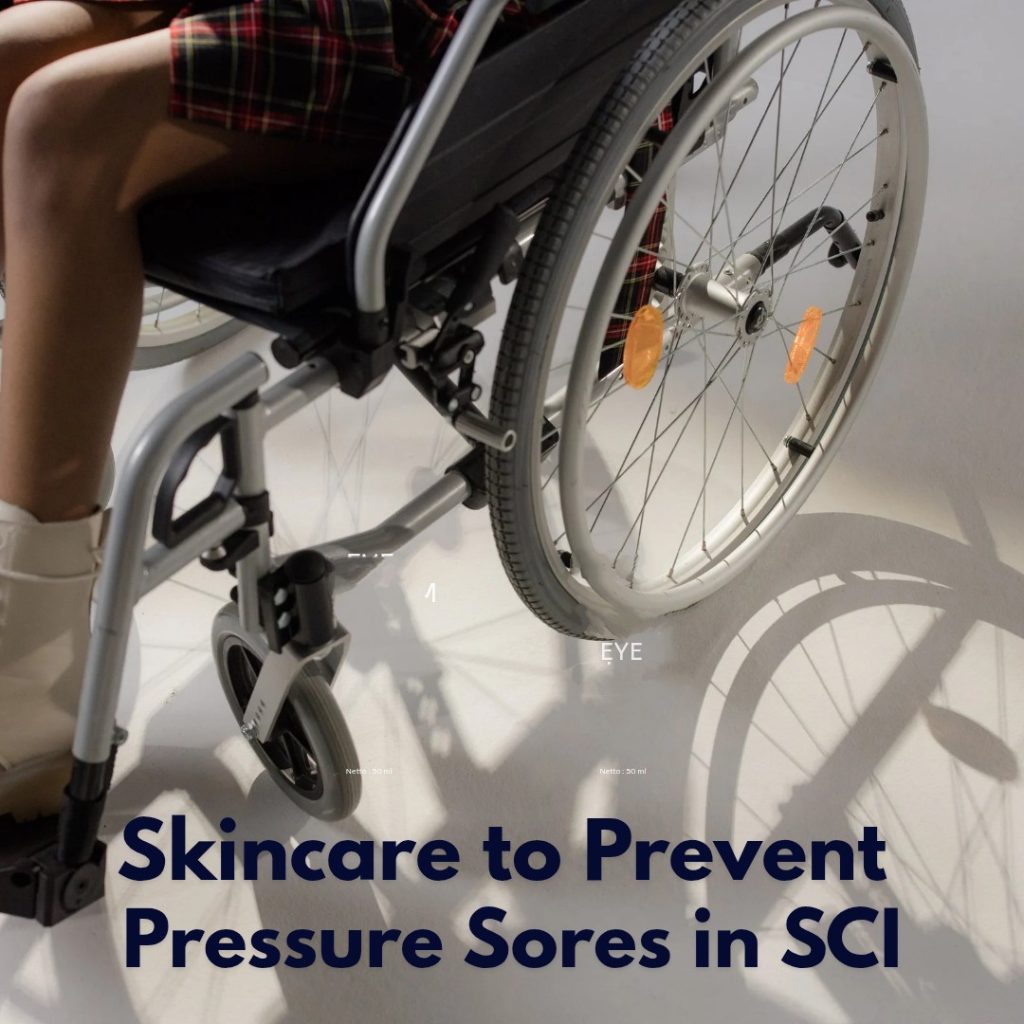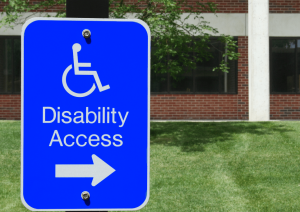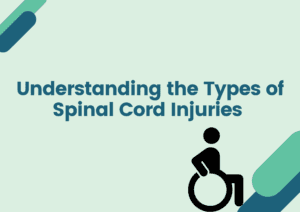
By Scihealthhub – May 19, 2025
Pressure sores, also known as pressure ulcers or bedsores, are one of the most common and serious complications faced by people with spinal cord injuries (SCI). These sores develop when prolonged pressure on the skin reduces blood flow, leading to tissue damage. Without proper care, they can progress from mild redness to deep, infected wounds that require extensive treatment and recovery time.
Since individuals with spinal cord injury often experience reduced sensation and limited mobility, they may not immediately notice early signs of skin breakdown. This makes a proactive daily skincare routine essential in preventing pressure sores before they start. A well-structured routine—focused on skin inspection, pressure relief, and healthy lifestyle—can significantly reduce the risk of developing these sores and promote overall skin health.
In this guide, we will outline a simple yet effective daily skincare routine specifically designed to help people with spinal cord injuries prevent pressure sores. By incorporating these steps into your daily life, you can protect your skin, enhance your comfort, and maintain your independence.
1. Understanding Skin Vulnerability in Spinal Cord Injury
People with spinal cord injuries are at a significantly higher risk of developing pressure sores due to various physiological and functional changes that make their skin more vulnerable.
A. Reduced Sensation and Delayed Skin Feedback
Loss of sensation in areas below the level of injury means that pressure, pain, friction, moisture, and even minor injuries can go unnoticed for extended periods.
While a person without a spinal cord injury might instinctively shift their position when they begin to feel discomfort, someone with a spinal cord injury may remain in one position for too long, increasing the risk of skin breakdown.
B. Prolonged Pressure on Bony Areas
Sitting or lying in the same position for extended periods places continuous pressure on certain parts of the body, especially over bony prominences such as the sacrum (lower back), ischial tuberosities (sit bones), heels and hips.
Since blood flow is restricted in these areas when pressure is prolonged, tissues may begin to break down due to a lack of oxygen and nutrients. Without regular repositioning and pressure relief, the skin in these areas becomes highly susceptible to sores.
C. Moisture-Related Skin Breakdown
Excess moisture from sweating, incontinence (urinary or fecal), or improper drying after bathing can weaken the skin barrier and increase the risk of pressure sores. Damp skin is more prone to friction and maceration (softening due to excessive moisture), making it fragile and easily damaged.
D. Friction and Shear Forces
Friction occurs when the skin rubs against a surface, such as clothing, bed sheets, or wheelchair cushions. This can lead to irritation, blisters, and minor abrasions that may develop into pressure sores if not managed properly.
E. Poor Circulation and Reduced Healing Ability
Spinal cord injuries often lead to changes in blood circulation, particularly in the lower body. Poor circulation means less oxygen and nutrients are delivered to the skin, making it more fragile and slower to heal from minor injuries. When skin cells do not receive adequate nourishment, they become more vulnerable to breakdown.
2. Essential Components of a Daily Skincare Routine
Establishing and maintaining a consistent daily skincare routine can help individuals with spinal cord injuries prevent the onset of pressure sores. The routine should be simple, sustainable, and tailored to individual needs, focusing on cleanliness, hydration, and frequent pressure relief.
A. Morning Routine
The morning is the best time to assess your skin’s condition and prepare it to withstand the demands of the day. Here are the key steps:
I. Skin Inspection
Begin your day with a thorough skin check. Use a long-handled mirror or enlist the help of a caregiver to examine hard-to-see areas. Pay special attention to bony prominences, such as:
- Buttocks
- Sacrum
- Heels
- Hips
- Elbows
- Shoulders
- Back of the head (if bedridden)
Look out for:
- Redness that doesn’t fade after relieving pressure
- Swelling or warmth
- Changes in skin texture or color
- Cracks, cuts, or blisters
Early detection is key to preventing minor issues from developing into serious wounds.
II. Cleansing
Clean your skin gently using lukewarm water and a mild, fragrance-free soap. Avoid harsh scrubbing, as the skin may be fragile.
Pat the skin dry with a soft towel, rather than rubbing.
Ensure all moisture is removed, especially in skin folds (e.g., groin, underarms, under breasts), as trapped moisture can lead to skin maceration and increase infection risk.
III. Moisturizing
Apply a lightweight, fragrance-free moisturizer to keep the skin hydrated and supple. Focus on dry areas, but avoid excessive use—especially in pressure-prone or moisture-prone areas.
Use non-greasy, quick-absorbing products to reduce friction and buildup.
If necessary, barrier creams can be applied on high-friction areas.
IV. Dressing and Protective Wear
Choose clothing that supports skin health:
Wear soft, breathable, moisture-wicking fabrics that reduce heat and moisture buildup.
Avoid tight-fitting clothing and seams that may press into the skin.
If you’re at high risk, apply pressure-relieving dressings (such as foam or silicone pads) over vulnerable areas.
V. Pressure Relief Techniques
Pressure relief is one of the most critical components of skin care in spinal cord injury. Incorporate the following techniques into your daily routine:
In a wheelchair: Perform weight shifts every 15–30 minutes. Use push-ups, side leans, or tilt functions if your wheelchair has one.
In bed: Change positions at least every 2 hours. Use pillows, wedges, or positioning devices to offload pressure from bony areas.
B. Midday Routine (Optional but Beneficial)
Midday routines help reinforce skin protection and ensure comfort throughout the day, especially for those spending extended periods in a wheelchair or bed.
I. Reassess Skin (if possible)
Do a quick check during a bathroom break or transfer to see if any redness, irritation, or discomfort has developed. This is particularly helpful if you’ve had a long outing or period of sitting.
II. Reapply Moisturizer If Skin Feels Dry
Environmental conditions (like heat or air conditioning) can dry out the skin. Reapply moisturizer to dry areas as needed, ensuring the skin remains hydrated and resilient.
III. Ensure Proper Seating Position and Cushioning
Check that you’re still seated correctly and that your cushion hasn’t shifted. Poor posture or compression of the cushion over time can reduce its effectiveness in relieving pressure.
Use cushions designed specifically for pressure redistribution (e.g., gel, air, or foam-based).
Make sure your wheelchair setup supports your posture and minimizes shear forces.
C. Evening/Night Routine
Evening care helps the skin recover from the day’s activities and sets the stage for overnight protection.
I. Skin Check Before Bed
Conduct a second full-body inspection, as you did in the morning. Night is an ideal time to catch any developing issues that weren’t visible earlier in the day.
II. Nighttime Cleansing (if needed)
If you’ve sweated heavily, had incontinence episodes, or used medical devices during the day (like catheters or braces), gently cleanse the affected areas.
Ensure the skin is dry before lying down for the night.
Avoid sleeping with damp skin or clothing.
III. Moisturizing Again (If Needed)
Reapply moisturizer to dry areas, especially the feet, elbows, and hands. Be cautious not to over-moisturize areas that will bear weight overnight, like the back or hips.
IV. Use of Barrier Creams (if prone to incontinence)
If you have urinary or fecal incontinence:
Apply a protective barrier cream, such as zinc oxide or dimethicone-based products, to reduce moisture damage and prevent skin maceration.
V. Positioning and Pressure Relief While Sleeping
Ensure you’re properly positioned in bed:
Use pillows or wedges to offload pressure from the heels, sacrum, and hips.
Specialized pressure-relieving mattresses or overlays can help reduce pressure while sleeping.
If possible, set alarms or ask for assistance to turn or reposition every 2–3 hours overnight.
3. Additional Tips for Healthy Skin
While a daily skincare routine is essential, overall skin health is also influenced by lifestyle factors such as hydration, nutrition, mobility, and hygiene. These additional tips will help you maintain resilient, healthy skin and further reduce the risk of pressure sores.
A. Hydration and Nutrition
Proper hydration and nutrition play a vital role in maintaining skin integrity and supporting wound healing.
Hydration: Drink adequate water throughout the day to keep the skin hydrated from within. Dehydrated skin becomes dry, less elastic, and more prone to breakdown. Aim for at least 3 to 4 litres of water daily, unless advised otherwise by your doctor.
Nutrition: Consume a balanced diet rich in:
Protein: Essential for tissue repair and immune function. Include lean meats, fish, dairy, legumes, and eggs.
Vitamins A, C, and E: Help with skin regeneration and immune defense.
Vitamin A supports skin cell growth.
Vitamin C promotes collagen production.
Vitamin E protects skin from oxidative stress.
Zinc: Critical for wound healing and immune support. Found in meats, nuts, whole grains, and legumes.
You might also like to see 10 Diet Tips for Individuals with Spinal Cord Injury
B. Incontinence Management
Moisture from urine or feces can quickly damage the skin, especially if left in contact for prolonged periods.
Use condom catheters, absorbent pads, or adult briefs designed to wick moisture away from the skin.
Change soiled clothing or bed linens immediately to minimize exposure.
Clean the skin thoroughly after each episode and apply barrier creams to protect against moisture-related skin damage.
Consider using underpads or waterproof covers to protect mattresses and cushions without increasing heat or friction.
C. Clothing and Bedding Tips
What you wear and sleep on can either protect or harm your skin.
Choose soft, breathable fabrics like cotton or moisture-wicking blends to reduce skin irritation and overheating.
Avoid tight or abrasive clothing that may press into or rub against the skin.
Ensure bedding is clean, smooth, and wrinkle-free. Even small creases can create friction points over time.
Consider using friction-reducing sheets or silk-like undergarments for added protection during transfers or repositioning.
D. Exercise and Circulation
Good blood flow is essential for keeping skin tissues nourished and oxygenated.
Engage in regular physical movement, depending on your abilities. Even small activities help stimulate circulation.
If you have limited mobility, passive range-of-motion exercises (performed by a caregiver or therapist) can help maintain joint flexibility and promote blood flow.
If feasible, use standing frames or tilt tables under professional supervision to relieve pressure and improve circulation.
Simple actions like ankle pumps, arm lifts, or hand squeezes can also enhance circulation when done consistently.
Physical activity not only supports healthy skin but also benefits cardiovascular health, digestion, and mental well-being.
4. When to Seek Medical Attention
Despite the best skincare routines and preventive efforts, pressure sores can sometimes still develop. Recognizing the early warning signs and knowing when to seek professional help can make the difference between a minor issue and a serious complication.
Seek medical advice or intervention if you notice any of the following:
Persistent Redness: Skin that remains red and does not return to its normal color after pressure is relieved may indicate early tissue damage.
Blisters or Open Sores: Any break in the skin, no matter how small, should be evaluated to prevent infection or progression to a deeper wound.
Swelling or Warmth: Swelling, warmth, or a feeling of tightness around a bony area could signal inflammation or infection.
Skin Discoloration: Purplish, blue, or dark patches (especially in darker skin tones) may be early signs of deep tissue injury.
Foul Odor or Discharge: Any drainage, especially if it smells bad or appears yellow, green, or bloody, may indicate infection.
Pain or Discomfort (if sensation is present): Pain around a pressure area can be an important symptom, even in people with partial sensation.
Conclusion
Caring for your skin daily is a vital step in preventing pressure sores and maintaining overall health after a spinal cord injury. With consistency, awareness, and timely medical attention, you can keep your skin healthy and resilient—one day at a time.






